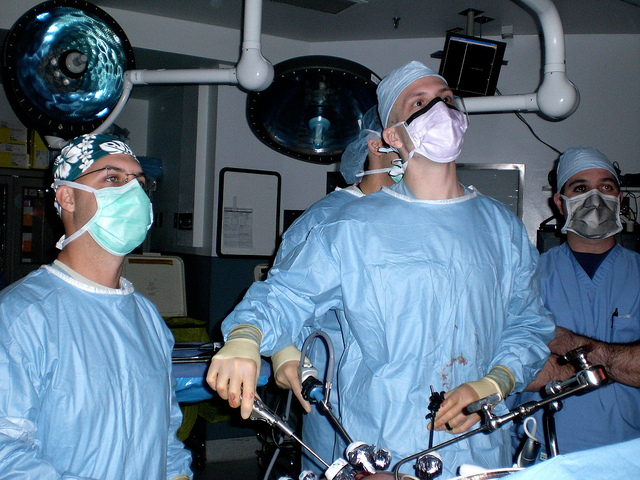Guide to types of weight-loss surgery
Weight-loss (bariatric) surgery helps you lose weight and lowers your risk of medical problems associated with obesity. Bariatric surgery contributes to weight loss in two main ways:
- Restriction. Surgery is used to physically limit the amount of food the stomach can hold, which limits the number of calories you can eat.
- Malabsorption. Surgery is used to shorten or bypass part of the small intestine, which reduces the amount of calories and nutrients the body absorbs.
Four common types of weight-loss surgery are:
- Roux-en-Y gastric bypass
- Laparoscopic adjustable gastric banding
- Sleeve gastrectomy
- Duodenal switch with biliopancreatic diversion
Roux-en-Y gastric bypass
Multimedia
In Roux-en-Y gastric bypass, the surgeon creates a small pouch at the top of the stomach. The pouch is the only part of the stomach that receives food. This greatly limits the amount that you can comfortably eat and drink at one time.
The small intestine is then cut a short distance below the main stomach and connected to the new pouch. Food flows directly from the pouch into this part of the intestine. The main part of the stomach, however, continues to make digestive juices. The portion of the intestine still attached to the main stomach is reattached farther down. This allows the digestive juices to flow to the small intestine. Because food now bypasses a portion of the small intestine, fewer nutrients and calories are absorbed.
Laparoscopic adjustable gastric banding
Multimedia
In the laparoscopic adjustable gastric banding procedure, a band containing an inflatable balloon is placed around the upper part of the stomach and fixed in place. This creates a small stomach pouch above the band with a very narrow opening to the rest of the stomach.
A port is then placed under the skin of the abdomen. A tube connects the port to the band. By injecting or removing fluid through the port, the balloon can be inflated or deflated to adjust the size of the band. Gastric banding restricts the amount of food that your stomach can hold, so you feel full sooner, but it doesn't reduce the absorption of calories and nutrients.
-
Why Body Fat Testing Is So Important
One of the most overlooked aspects of an
-
The Benefits Of ProResvera Explored
If there is one health supplement that has been making airwaves in rec
-
Losing Weight While Breast-feeding
Breast-feeding requires extra nutrition, making healthy eat
-
Discover The Most Essential Healthy Benefits Of Superslim Diet Pills
There is a new unbeatable approach in weight loss management called th
-
Type 2 diabetes risk predicted by women’s body type, hip circumference
Type 2 diabetes risk may be predicted by a women’s body type b
-
An 8-Minute Full-Body Workout (Video)
You know that feeling when youve especially scheduled a workout
- DON'T MISS
- Fast Weight Loss Tips For Better Weight Loss Results
- Myths That Will Make Your Diet Fail
- The Real Health Care Crisis…
- 3 Ideas To Help You Reduce Stomach Fat Fast And Permanently
- Well Being Benefits Of A Mediterranean Eating Regimen
- Exclusive HuffPost Q&A With The Biggest Loser Nutritionist, Cheryl Forberg, R.D.
- Can Dairy Help Advance Health Equity For African Americans?
- Frustrated By Slow Weight Loss
- Best diet to lose weight after pregnancy
- Super Easy Weightloss, And Kills Cravings, Too




